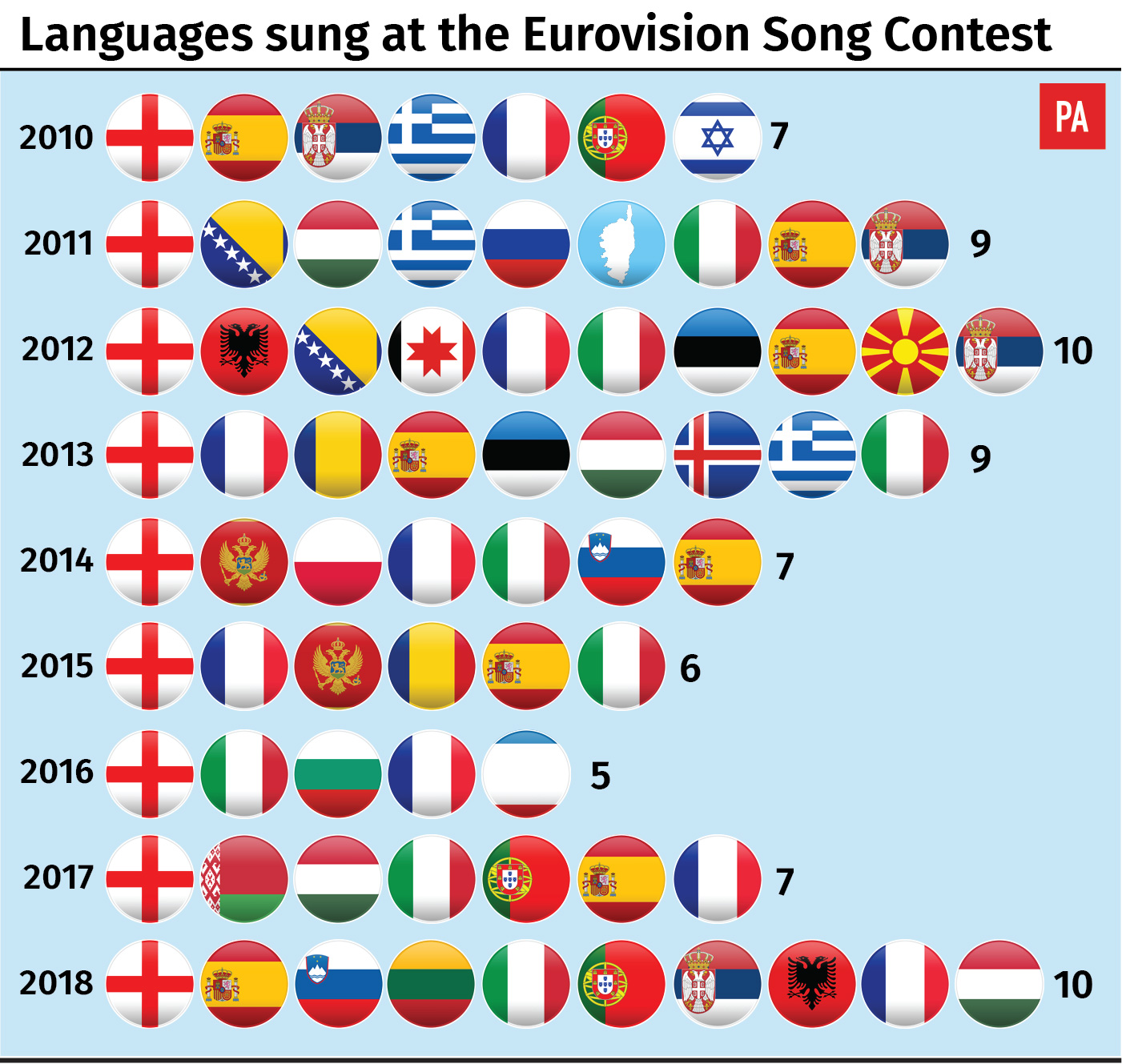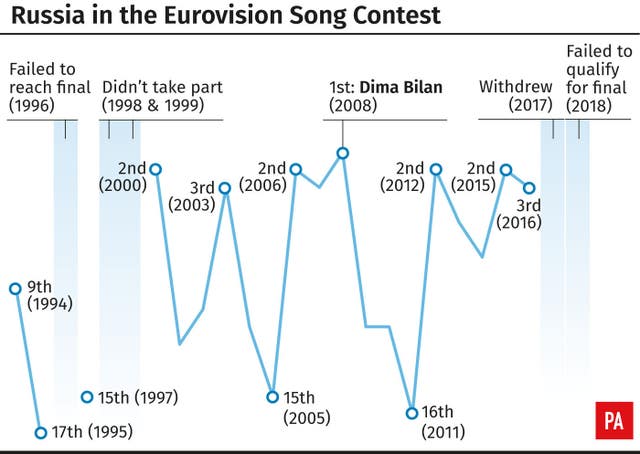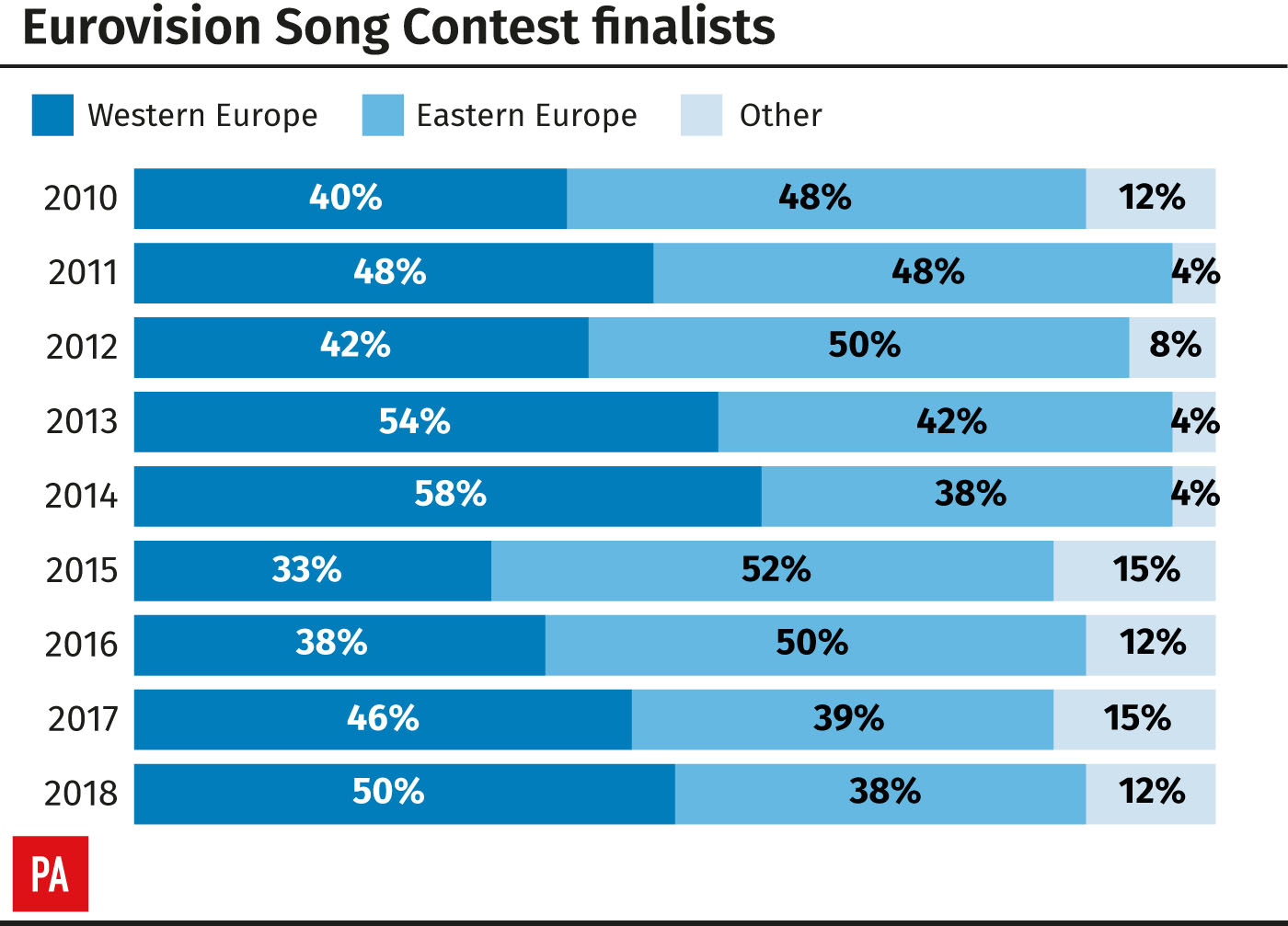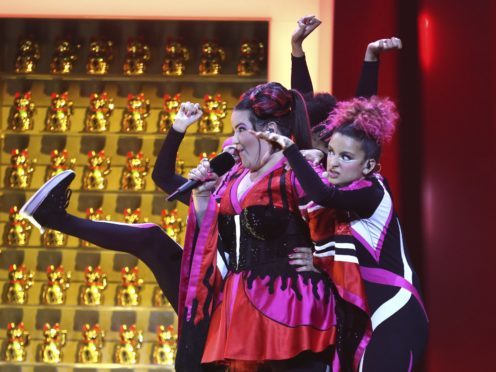Audiences for this year’s Eurovision Song Contest will be treated to a greater mix of languages than usual when performers take to the stage on Saturday.
Some 10 different languages will be heard during the final, including Albanian, Slovene and – for the first time since 2001 – Lithuanian.
English remains the most common choice for singers, including bookmakers’ favourites Eleni Foureira of Cyprus, and Netta of Israel.
But the total number of languages is a big jump on last year (seven) and 2016 (five), besides ranking – alongside 2012 – as the joint highest this decade.

This year’s line-up of 26 acts was decided only after Thursday’s semi-final, which saw the surprise elimination of Russia.
It is the first time the country has failed to qualify since the current system of semi-finals was introduced.

Others not making the final include Armenia, Georgia and Montenegro, all of which entered songs in their native language.
Alongside English, Albanian, Slovene and Lithuanian, the 2018 final also boasts acts performing in Spanish, Italian, Serbian, French, Portuguese – the host nation – and Hungarian.
The UK gets an automatic place in the Eurovision final, thanks to its status as one of the biggest financial contributors to the European Broadcasting Union (EBU).
This year the UK is being represented by classically-trained musician SuRie, who will be performing a song called Storm.
Ireland will appear in the final for the first time since 2013, with the song Together by Ryan O’Shaughnessy.

The final is also notable for:
– A return appearance by Norway’s Alexander Rybak, who won Eurovision in 2009
– Half the acts coming from countries in western Europe, the greatest proportion since 2014
– No appearance by Azerbaijan, who failed to qualify for the first time since their debut in 2008
– Australia’s fourth appearance in the contest, represented by Jessica Mauboy who previously appeared as an interval act during one of 2014’s semi-finals
– Not being screened in China, after the EBU barred the country from showing the contest for censoring LGBT elements of Tuesday’s semi-final
The Eurovision Song Contest will air on BBC One on Saturday at 8pm.
